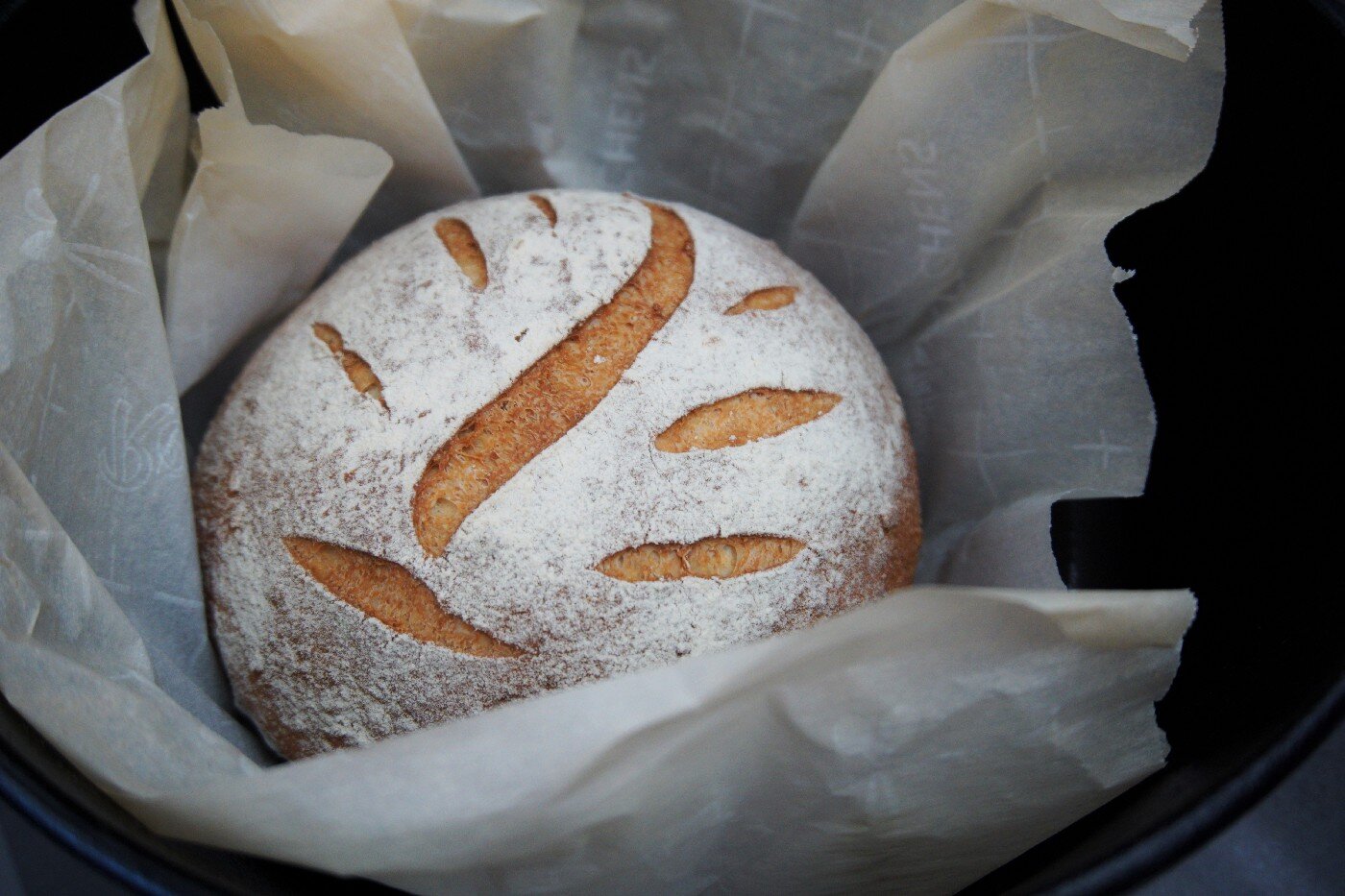When I was new to the craft of baking bread, I assumed that scoring — making a pattern of cuts on the surface of the dough immediately before baking — was mostly decorative, but observation and experimentation have taught me otherwise. The reason we score bread is to prevent loaves from tearing as they rise in the oven. Scoring helps guide dough as it develops during baking, and if you were to omit this step the surface would likely rip in a weak spot and the loaf would not rise as high or as well.
Regardless of the pattern you use for scoring, and there are many, here are tips that will help you score like a baking pro.
Photo by MissMushroom on Unsplash
Use a razor blade for scoring
Many professional bakers score bread with a lame, pronounced lahm, which is a fancy French name for a stick that holds a double-sided blade. You can forgo the stick and rely on an ordinary razor blade. One with a single edge works best for making patterned cuts across the dough’s surface because it’s safer to use than one with a double edge; it’s also thin, sharp, and strong enough to slash without tearing.
In my experience, warm dough can be a challenge to score, so I like to work with dough that’s still cold from a long proof in the refrigerator. The chill gives it a tight, resilient surface that allows a sharp razor blade to slice into it with ease.
Pay attention to the depth of your cuts
The depth of your scoring cuts has everything to do with how your dough expands, and how evenly it rises during baking. Think of a shallow cut as one that slices about 1/8" into the surface, and a deep cut as one that slices about 1/2" in or slightly more. It’s ideal if you can come close to gauging the cut correctly because when you score more deeply than is warranted for a particular dough, the loaf may flatten rather than rise.
As a general guide, when working with dough that’s adequately proofed but still has some rise left in it — in other words, an ideal dough — make your cuts about 1/4" deep. If your dough is slightly underproofed, cut it deeper, 1/2" or so, to encourage a fuller rise in the oven. If the depth of your score is not exactly right the first time, you can go over it again to improve it.
For dough that is overproofed with little remaining strength, make shallow cuts of 1/8" or less to prevent your dough from collapsing.
If you’re unsure how well-proofed your dough is, I describe that below.
Also consider the angle of your cuts
Scoring or slicing straight into the dough by holding the blade perpendicular to the surface causes the outer edges of the cut to move relatively far apart from each other as the dough rises in the oven. This is one approach you can use and it creates a wide, flat opening across the surface of your finished bread. (See the loaf that’s third from the left in the top row of images below.)
If you are aiming for the curled ear that sometimes forms dramatically on finished bread, you should angle the blade when making the cuts instead of slicing directly into the dough. If you can manage close to a 45-degree angle, you may get that ear, which is beautiful when it happens, but a lovely flourish rather than a requirement.
Use scissors to score a rough dough surface
You can use ordinary kitchen scissors to score bread as a useful workaround when the surface of your dough is covered with nuts, dried fruits, or seeds. In this case, a razor blade would make a difficult and uneven score.
Hold the scissors normally but try to angle them slightly against the surface of the dough. Then snip, snip, snip across the surface in a jagged line, making sure each snip connects to the last and visually forming a zig-zag pattern over the center of dough.
Assess how well your dough has proofed
Experience will guide you in gauging whether your dough is over, under, or adequately proofed, but there are some clues you can look for:
If your dough is gassy and fragile rather than upright and firm before baking, and if it begins to deflate when you score it, your dough is likely overproofed. Don’t worry. Just make a shallow score and the loaf will rise again.
If your dough is compact, tight, and has little gas, it’s underproofed and will not only tolerate, but actually welcome a deeper score.
You have an adequately proofed dough if it sits round and high, and if it retains its shape when you turn it out of the brotform or bowl in preparation for baking. In this case, you’ll do well with a score that’s about 1/4" deep.
Let both the dough and your imagination guide you
Different loaves benefit from different scoring patterns, which allows you to bring beauty and imagination into your bread baking. Patterns range from spiral or tic-tac-toe, to lines that are feathered or parallel; the shape of your dough can help influence the pattern you choose.
No matter the design, scoring is an aspect of bread baking that is full of fun and artistry. It allows you to approach a necessary step in a way that is light and imaginative, and use it to add a personal and even extravagant touch to the loaves you bake.
Copyright, Ellen Arian, Ellen’s Food & Soul



